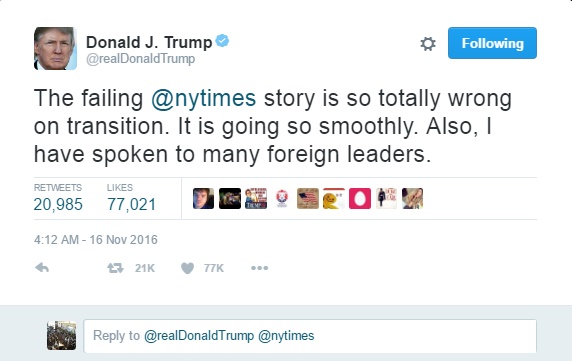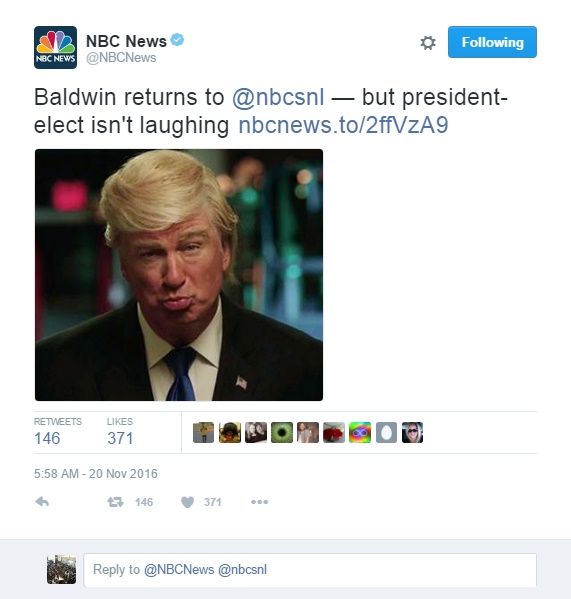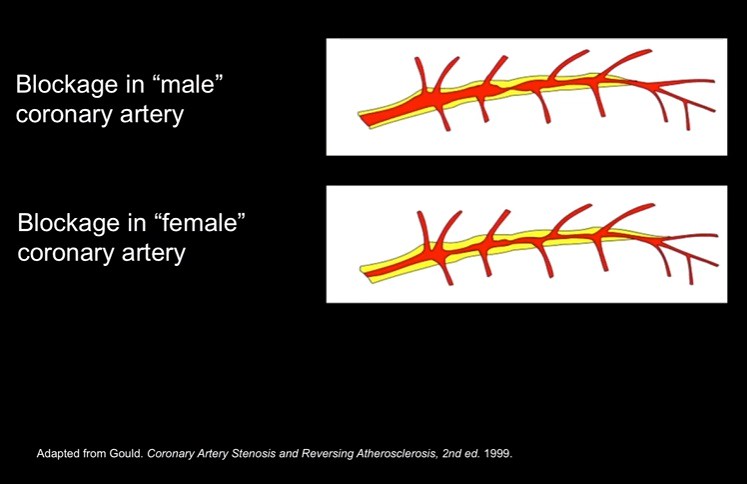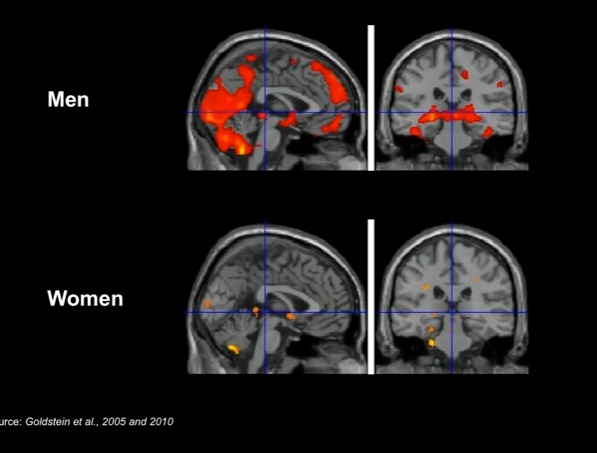The election results have been tallied and the President Elect has been determined to be the Republican Nominee Donald Trump. During his campaign, Donald Trump promised to restore dignity for our veterans by re-working the Veterans Administration System and take care of our soldiers. These promises sound wonderful to a soldier in uniform. As a result, this might have raised the amount of votes tallied from military soldiers.
After processing the election results, today -- which is Veterans Day in the United States allows us a day to reflect on the future with the election behind us. Specifically, the state of the nation while paying respect to the soldiers who have given the ultimate sacrifice and those who have served our country -- of which I am one (US Air Force 1996-2000). The following question can be entertained:
Where are we headed as a country with the current military?
I would like to make a few comments on the matter based on the information which has surfaced over the last few months -- in addition to the months ahead.
Happy Veterans Day!
I am a veteran. I served my country proudly in the US Air Force from 1996-2000. I often think of that time of service. Especially, when I interact with my brothers and my sisters (military friends). My tour of service was very good. I worked hard and played hard. I had the opportunity to visit areas of the world that most Americans will never get a chance to visit. Examples include military bases in the Middle East in the middle of nowhere. The primary mission was to generate F-16 jets for "peace-keeping missions" -- i.e., enforcing the no fly zone on either end of Iraq.
Why am I telling you all of this information?
Especially when I just wrote a blog post about the second suicide attempt of Pfc. Chelsea Manning leaking information?
In that post, I mentioned that each service member agrees not to talk about their specific jobs during a given tour. Well, so far, nothing of importance has been said on my behalf. The reason why I speak about general tours/deployments/trips on which I was sent was to convey the importance about the current and past military members serving our country with distinction and honor. There are a whole lot of prior military brother and sisters walking this great country who have contributed to the security and present day status of the country.
To them (Veterans) we each owe respect!
Travelling around and congregating today to think about veterans can be good and meaningful. Typically, this involves hanging out at a family members house (watching a holiday game) on TV and periodically mentioning veterans. Please if this is the case, do not be too lazy to stand up during the performance of the national anthem before a game (and yes even if the game is on TV or at a distance). Or maybe the day involves hitting the shopping mall to participate in purchasing a new consumer product with astronomical savings in the name of Veterans Day Sales.
What is not typically highlighted and noticed by the general public are the large number of veterans that are walking/roaming the streets with mental illness. Furthermore, not a whole lot of attention is being paid to the failed Veterans Administration System -- whose responsibilities include offering treatment to visible and non-visible diseases (physical and psychological). Many veterans will be travelling around today unnoticed and without help with their disease that plagues them. If you know of any veteran who is struggling - please let them know that help is available. There are organizations across the United States whose mission is to restore dignity and hope to their lives.
Last night I was listening to the podcast "
Unbeatable Mind."
Commander Mark Divine interviewed Nathan Fletcher who is the director of the "
Three Wise Men Foundation". Here is a quote from the interview that leaped out of the speakers at me regarding veterans and suicide:
"Over 70% of the veterans who commit suicide never asked for help from anybody..."
WOW. Unbelievable. Nathan Fletcher attributed a large part of that was due to the pride and mindset of Veterans that do not ask for help. They just power through the problem or self-medicate. Through his foundation of working with veterans, he is changing the mindset of veterans who suffer with Post Traumatic Stress Disorder (PTSD). The common problem associated with seeking treatment for problems such as PTSD are the potential stigmas that go along with the diagnosis.
Although, I would argue that as more and more people (military and non-military) are seeking treatment for traumatic events in their lives, the stigma is disappearing while the frequency is increasing. Therefore, thinking of the traumatic event as a starting point from which to grow from is removing any stigma associated with the term altogether (which is both admirable and genius too). He is coining the term "Post Traumatic Growth" -- awesome.
The work of foundations such as "
Three Wise Men Foundation" and other veterans groups: "
Ride 2 Recover", "
Wounded Warrior Project" are superstars and extremely successful at rehabilitating veterans through injecting exercise and changing the mindset and practices. If you are having trouble finding an organization for getting a veteran help, type into a search engine like Google the phrase "
Veteran Support Groups" and numerous support groups will appear after scrolling past the advertisements.
What emerges from this work are soldiers who are given a purpose in life.
This is great. Although, more work needs to be done in total to help veterans around the US.
President Elect Donald Trump Promises To Help
Returning to the introduction of the blog post, we now have President Elect Donald Trump who will have to deal with the issues that I described above.
Recently, I wrote a post about the top 20 science issues that the next president will have to entertain. Actually, in that post, I 'copied and referenced (reformatted) the original questions from the nonprofit foundation "
ScienceDebate" which represents 56 organizations. The 56 organizations are made up of 12 million scientists.
Why do I bring these questions up?
A couple of the top 20 questions has direct connection to the veterans suffering from mental illnesses and/or are homeless. The first question has to do with mental illness:
Question:
Mental illness is among the most painful and stigmatized diseases, and the National Institute of Mental Health estimates it costs America more than $300 billion per year. What will you do to reduce the human and economic costs of mental illness?
President Elect Donald Trump's Answer:
This is one of the great unfolding tragedies in America today. States are reducing their commitments to mental health treatment and our jails are filled with those who need mental health care. Any mental health reforms must be included in our efforts to reform healthcare in general in the country. We must make the investment in treating our fellow citizens who suffer from severe mental illness. This includes making sure that we allow family members to be more involved in the total care of those who are severely mentally ill. We must ensure that the national government provides the support to state and local governments to bring mental health care to the people at the local level. This entire field of interest must be examined and a comprehensive solution set must be developed so that we can keep people safe and productive.
I will be the first to admit that I did not vote for Donald Trump. With that being said, I believe very strongly in democracy and in the electorate. Therefore, the majority of this great nation have stood up and decided that he is our best candidate. In light of this, lets look forward at where the future takes us -- especially with this critical question of mental health care and our veterans.
By the sounds of the answer that President Elect Donald Trump has given, there will be support to our veterans who have mental health issues along with other non-veterans who suffer too. I truly hope that this is the case in the near future. Any support that he can throw (in terms of funding, motivation, etc.) will truly help the country re-prioritize our values toward taking care of ourselves first -- which seems to have been lost.
There are such a large amount of veterans who have not received any help. The statistic of 70% is one such example which needs dire attention. Additionally, transitioning a veteran back into society is importance too. These two factors alone probably contribute greatly toward the ability to have an operational veteran who has been "of service to our country" and continues in the civilian world to be of service to our country.
One devastating point to mention in the podcast "Unbeatable Mind" which I forgot to highlight is that untreated illnesses also result in "self-medication". Whether that be with the use of alcohol or drugs is of a major concern for our veterans and other citizens of this nation. Currently, a major problem exists with an 'opioid' addiction hitting the United States in extremely large numbers. This brings us to the second of the 'top 20 science issues' above which deals calls into question a solution for this growing epidemic:
Question:
There is a growing opioid problem in the United States, with tragic costs to lives, families and society. How would your administration enlist researchers, medical doctors and pharmaceutical companies in addressing this issue?
President Elect Donald Trump's Answer:
We first should stop the inflow of opioids into the United States. We can do that and we will in the Trump administration. As this is a national problem that costs America billions of dollars in productivity, we should apply the resources necessary to mitigate this problem. Dollars invested in taking care of this problem will be more than paid for with recovered lives and productivity that adds to the wealth and health of the nation.
The answer above causes concern to me. Actually, next week I will write a post about part of the reason why there is an issue with opioid use. Part of the problem lies on the side of the pharmaceutical industry. Stay tuned. Regardless, there is a major issue that needs to be addressed as a nation. This problem can be couple to mental health issues. Funding needs to be available address treatment and prevention.
Conclusion...
Part of the problems plaguing veterans is the inability to transition back into civilian life. The solution to this lies within all of us. Some lies within the families (in comprehensive care) to motivate getting help and seeking out resources for transitioning back into civilian life. As I mentioned above, there are many useful and successful resources available to veterans in order to lead a healthy and productive life.
President Elect Donald Trump can do some great if he can stimulate the economy and get jobs going again. Veterans need work to do to feel useful -- just like every other American citizen. Although, veterans are highly motivated workers who have a unique perspective about the world which can be extremely useful to a team. Industries across the board should welcome them to the workforce and utilize their strength and build upon their weaknesses.
Industries across the board suffer from the inability to tell the public what experience that they are looking for. I work in a university and often I will hear outsiders say "Colleges and Universities are not producing a quality worker for us." The solution is simple: Just tell us what you want!
As for the veteran leaving the service and transitioning back into civilian life, I am reminded of the news from an article titled "
Veterans: Silicon Valley's most overlooked talent" that states:
Green, who eventually landed a project manager role at San Jose-based Cisco, said tech companies aren't doing enough to help the thousands of service members who are entering the civilian workforce every day.
“Tech companies have all these veterans initiatives. But often, they’re just sound bites and spin," Green said. “I went to Apple just to meet with someone and they said the same thing — just apply online. A lot of doors were closed in my face.”
Green said he faced a common problem experienced by veterans re-entering the civilian job market: the difficulty of relating his Army experience to the business world.
Tech companies like Cisco, Google and LinkedIn all have veteran-focused initiatives, from hackdays for veterans to workshops and training events aimed to help veterans transition to civilian life.
But these efforts are still not enough to help veterans compete on an even playing field in uber-competitive Silicon Valley, said Green.
Green believes that while individual companies’ veterans initiatives are important, they are not very effective on their own. He encourages companies to come together to better explain to veterans what they are looking for in terms of talent and how to best translate skills from the military world to civilian jobs.
“Companies need to join together to explain to veterans how to translate their skills, what training is needed and what the options are,” Green said. “That will help vets be more competitive in Silicon Valley.”
Mike Dougherty, another Army veteran, said hiring managers often did not see the value of his military experience to the business world.
Dougherty, who most recently served in Iraq as a lieutenant colonel, is the director of North American manufacturing and operations for Cisco. He also went on two combat deployments to Bosnia in the 1990s.
“I told them about being a platoon leader going into Bosnia with the 1st Armored Division across the Sava River,” Dougherty said. “And the hiring managers just said, ‘What does this have to do with this job?’"
After reading this excerpt along with the anecdotal account which I give regarding students leaving the university setting, the blame seems to be on the side of industry. Today's spectrum of available jobs requires more specificity in the job description. Further, industry should come together with both academia and the military to explain how to better recruit a worker from either setting.
Regardless of who is to blame, hopefully the next President Elect Donald Trump can bring back jobs and bridge this ever widening gap in the job force. He is the first truly business minded President without political experience. I sincerely hope that he makes good on his words regarding veterans and making America great again.
I hope that everyone has a great Veterans Day celebration. Be safe and think about the issues at hand. Above all, be thankful and grateful that you are not in a war zone or hostile area today. There exists a soldier who is thinking of you peacefully celebrating. Take a moment to thank them -- even if it is in spirit of mind.
Until next time, Have a great day!





